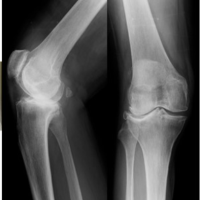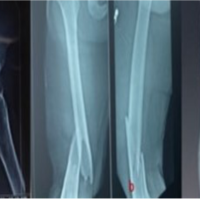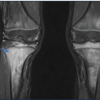Dr. Miind Patil, Department of Orthopaedics, Revival Bone and Joint Hospital, Thane, Maharashtra, India, Jupiter Hospital, Thane, Maharashtra, India, Fortis Hospital, Mulund, Mumbai, India. E-mail: drmilindpatil@yahoo.com
Despite the technological advancements in robotic total knee replacement (TKR) surgeries, the majority of TKR procedures worldwide remain conventional. Our practice maintains a balance between robotic and conventional TKRs, offering a distinctive viewpoint and gaining certain insights over a period of time. While we typically apply our knowledge from conventional TKR to robotic procedures, we have identified specific insights from robotic TKR that can be retrofitted to enhance conventional TKRs. In this article, we share these insights and practical recommendations.
Basic Concepts
In conventional TKR, surgeons conceptualize a three-dimensional model of the patient’s deformed leg by physical examination and X-ray analysis. Based on this, they determine the desired post-operative alignment and balancing, subsequently devising a surgical plan. In contrast, navigated TKR employs intraoperative registration of specific points to generate the three-dimensional model. However, inaccuracies in registration can lead to an erroneous model. Computed tomography (CT)-based robotic TKR, on the other hand, utilizes a pre-operative CT scan to create the three-dimensional model. The robot is informed of the soft-tissue laxity/tightness status by stressing the ligaments in flexion and extension, providing a precise representation of the deformed leg. This precision allows for minimal bone removal and limited soft-tissue release. These tactics of minimal bone resection and limited soft-tissue release can be applied to conventional TKRs too by following certain principles as mentioned below.
Applying Insights from Robotic TKR to Conventional Procedures
- Positioning the femoral implant at 3–5° of flexion aligns with the patient’s distal femur shape, accurately replicating the posterior condylar offset. This positioning also ensures a seamless transition between the femoral implant and anterior femur, mitigating anterior notching or patellofemoral joint overstuffing.
- The posterior condylar axis and transepicondylar axis are unrelated. Therefore, when aligning the sizing jig on the femur, it should correspond with the transepicondylar axis, not the posterior condylar axis. This alignment, combined with the prior point, facilitates optimal patellar tracking.
- A standard distal femoral resection of 8 mm is unnecessary unless the patient exhibits a non-correctable fixed flexion deformity under anesthesia. Typically, a 6-mm distal femoral resection suffices.
- A significant number of Indian patients presents with an exaggerated posterior tibial slope. Consequently, planning a 9-mm resection from the posterolateral point on the tibia often results in excessive anterior tibial bone removal. This increases the extension gap – further reducing the need for standard 8-mm resection of distal femur.
- Medial tibial reduction osteotomy significantly corrects varus knee deformities. Undertaking this step before any release is crucial for most varus knees. Occasionally, it is even required before excising femoral posteromedial osteophytes, which become more accessible post-osteotomy. This step along with putting tibia in 2–3° of varus reduces the need for medial soft-tissue release.
- If the knee exhibits limited flexion under anesthesia, anteriorizing or downsizing the femur to excise more bone from the posterior condyle proves beneficial.
- Some patients display physiological femoral valgus and tibial varus. Replicating this configuration widens the medial flexion gap, especially beneficial in a CR knee.
These insights are gained over a period of decades of using robots and have been utilized in our conventional TKR surgeries for years now. Although we have not conducted a formal research project to study the outcome difference by applying these changes to conventional TKR, we believe that these steps surely enhance conventional surgical principles. In conclusion, the technological innovations in robotic TKR and the shape-matching concept have ushered in a transformative phase in TKR surgery. These advancements might influence conventional TKR procedures, potentially achieving consistent alignment and balancing. The long-term implications of these changes on prosthesis longevity and patient satisfaction remain to be seen.






